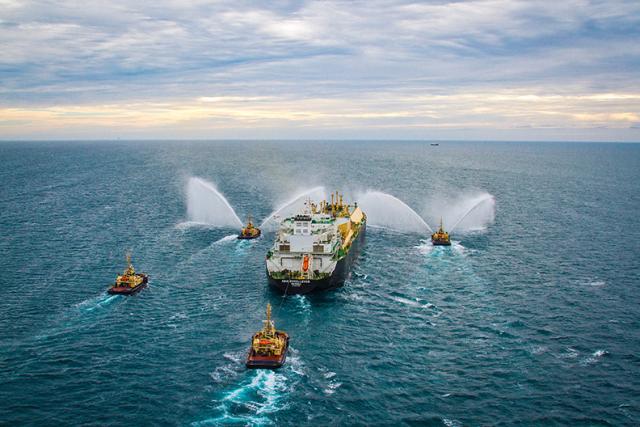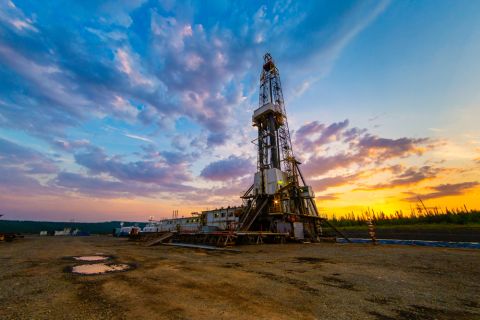
First cargo sails from Gorgon LNG on the North West Shelf. (Source: Chevron Australia)
Australia’s exports of liquefied natural gas (LNG) hit a record high of 56.8 mtpa in 2017, leaping 26.3% from 44.9 mtpa in the corresponding previous calendar year.
The boom in LNG cargoes from the Lucky Country, in tandem with recovering oil prices, boosted Australia’s 2017 LNG export revenue by 44.1% to $20.51 billion, according to the December LNG report released on Jan. 16 from energy consultancy, EnergyQuest.
EnergyQuest CEO, Graeme Bethune, described 2017 as a watershed year for Australia’s LNG industry, with growth demand from China driving historic highs as total Australian LNG exports to China increased by 40.5% from 12.4 mtpa to 17.5 mtpa over the period.
“China is now Australia’s second-largest LNG market and Australia is China’s biggest LNG supplier,” Bethune said.
“Increased Chinese demand is not only good for Australian LNG producers and our export revenue, but has an emerging positive impact for China’s environment. China is making a massive switch from coal to gas to reduce air pollution in major cities such as Beijing—and now Australian LNG is playing a significant role in achieving this goal,” Bethune added.
As a result of the spike in cargoes, LNG leapt in the pecking order from Australia’s fifth biggest export in 2016 to its third largest in 2017, overtaking gold and education.
“To put $20.51 billion of export revenue in perspective, this is more than the cost of Australia’s imports of passenger vehicles, which was $17.33 billion in 2016-2017. Passenger vehicles are Australia’s second biggest import cost,” Bethune said.
EnergyQuest said Australia was now the world’s second biggest LNG exporter by a substantial margin and was fast catching Qatar as the No.1 global exporter. The increase in exports was primarily driven by higher shipments from the Chevron-led Gorgon project and the APLNG project, located at Barrow Island off the northwest coast and Gladstone on the east coast, respectively.
The Woodside led North West Shelf remains the largest LNG producer but Gorgon has rapidly increase production to slip into second place.
Japan remains the largest importer of Australian LNG, importing 26.7 mtpa in 2017, up by 18.1% from 2016 and Australia is Japan’s largest LNG supplier.
Exports to Korea also increased significantly in 2017. Korea is Australia’s third-largest market and Australia is Korea’s second largest LNG supplier after Qatar. Two-thirds of exports to China and nearly two-thirds of exports to Korea originate from one of the three coal-seam to LNG plants at Gladstone in Queensland.
West coast LNG projects shipped 3.3 mtpa in December, down from 3.5 mtpa in November. The second big Chevron-led LNG plant at Wheatstone on the mainland of Western Australia did not ship any cargoes in December and only one cargo in the first week of January this year.
East coast LNG exports hit a record 2.0Mt in December, up from the 1.7 mtpa average over recent months.
EnergyQuest said the increase in east coast exports did not appear to have had any significant negative impacts on the fragile domestic gas market in the eastern states of Australia.
Recommended Reading
TGS, SLB to Conduct Engagement Phase 5 in GoM
2024-02-05 - TGS and SLB’s seventh program within the joint venture involves the acquisition of 157 Outer Continental Shelf blocks.
2023-2025 Subsea Tieback Round-Up
2024-02-06 - Here's a look at subsea tieback projects across the globe. The first in a two-part series, this report highlights some of the subsea tiebacks scheduled to be online by 2025.
StimStixx, Hunting Titan Partner on Well Perforation, Acidizing
2024-02-07 - The strategic partnership between StimStixx Technologies and Hunting Titan will increase well treatments and reduce costs, the companies said.
Tech Trends: Autonomous Drone Aims to Disrupt Subsea Inspection
2024-01-30 - The partners in the project are working to usher in a new era of inspection efficiencies.
Drilling Tech Rides a Wave
2024-01-30 - Can new designs, automation and aerospace inspiration boost drilling results?






